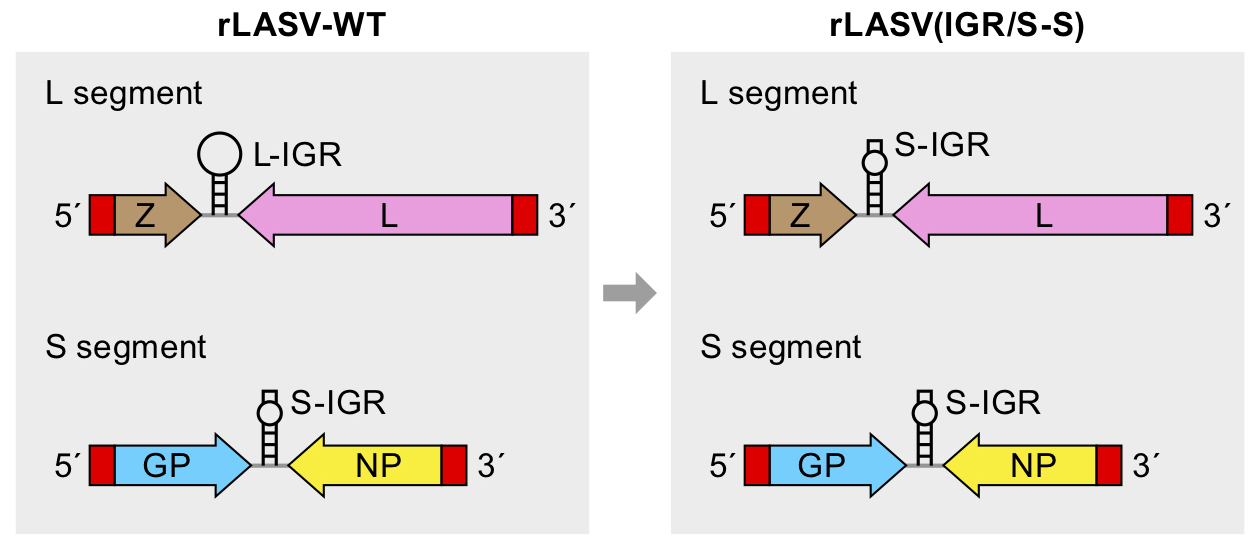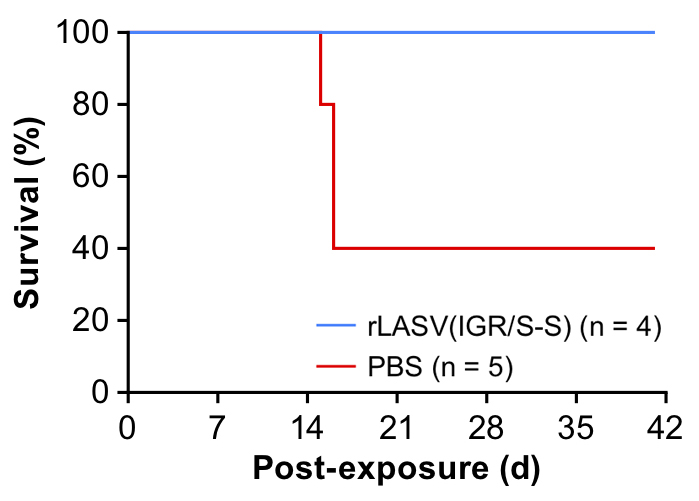Development of a new-generation Lassa virus live-attenuated vaccine candidate (Iwasaki Lab in mBio)
Several arenaviruses cause viral hemorrhagic fever in humans and pose important public health problems in their endemic regions. Lassa virus (LASV), the most significant pathogen among the arenaviruses, infects several hundred thousand individuals yearly in West Africa, resulting in numerous cases of lassa fever (LF), a condition associated with high morbidity and significant mortality. Given the impact of LF on human health and the limited countermeasures available to combat LF, the World Health Organization (WHO) has included LF on the revised list of priority diseases for the development of effective vaccines. Epidemiological studies indicate that live-attenuated vaccines (LAVs) represent the most feasible approach to controlling LF in West Africa, because they induce robust long-term cellular and humoral immune responses after a single immunization. We previously showed that in lymphocytic choriomeningitis virus (LCMV), the prototypic arenavirus, which is closely related to LASV: 1) the noncoding intergenic regions of the S (S-IGR) and L (L-IGR) genomic segments have distinct functional roles in the posttranscriptional control of viral gene expression: and 2) a recombinant LCMV containing S-IGR in both the S and L genomic segments [rLCMV(IGR/S-S)] was highly attenuated in a laboratory mouse model of LCMV infection, and that mice immunized with rLCMV(IGR/S-S) were fully protected against an otherwise lethal infection of wild-type rLCMV. Based on these promising results, we examined whether the reorganization of IGRs represents a general molecular strategy for arenavirus attenuation that can be applied to LASV. We generated and characterized a recombinant LASV containing the S-IGR in both the S and L genomic segments [rLASV(IGR/S-S)] (Fig. 1), and in in vitro and in vivo infection studies, demonstrated that rLASV(IGR/S-S) has the ideal features of a LAV, as listed below.
1) rLASV(IGR/S-S) grew to high titers in cultured cells (cost effective).
2) In vivo, rLASV(IGR/S-S) was fully attenuated in guinea pigs, but provided full protection after a single administration against an otherwise lethal exposure to wild-type LASV (LASV-WT) (Fig. 2).
3) rLASV(IGR/S-S) was genetically stable during serial passages in cultured cells (and is therefore unlikely to revert to a more virulent phenotype).
4) rLASV(IGR/S-S) retains the same antigenic composition, and therefore immunogenic potential, as LASV-WT.
5) rLASV(IGR/S-S) has a well-defined molecular mechanism of attenuation: the control of virus gene expression is altered by the replacement of L-IGR with S-IGR.
Serial passage is often successfully used to generate live-attenuated vaccines. However, a potential problem of this approach is that the mechanism of attenuation is difficult to determine, which raises concerns about the phenotypic stability of the LAV in response to additional mutations. However, rLASV(IGR/S-S) was developed based on a well-defined molecular mechanism in which the entire IGR was rearranged, and is therefore very unlikely to revert to a more virulent phenotype.
The recent identification of two novel hemorrhagic-fever-causing arenaviruses (HFAs) in Bolivia and South Africa has raised concerns about the emergence of novel HFAs outside their current endemic regions. The IGR sequences vary significantly among the different arenavirus species, but their roles in posttranscriptional regulation of viral gene expression are expected to be conserved among the arenaviruses. Therefore, our strategy should be generally applicable to the generation of LAVs for currently known and potentially newly emerging HFAs.
This article was published in mBio, on March 24, 2020.
Title: A Lassa Virus Live-Attenuated Vaccine Candidate Based on Rearrangement of The Intergenic Region.
Authors: Y. Caì#, M. Iwasaki# (#, co-first author), D. Motooka, D. X. Liu, S. Yú, K. Cooper, R. Hart, R. Adams, T. Burdette, E. N. Postnikova, J. Kurtz, M. St. Claire, C. Ye, J. H. Kuhn, L. Martínez-Sobrido, & J. C. de la Torre.
Links
- Home
- Achievement
- Research Activities
- Development of a new-generation Lassa virus live-attenuated vaccine candidate (Iwasaki Lab in mBio)









